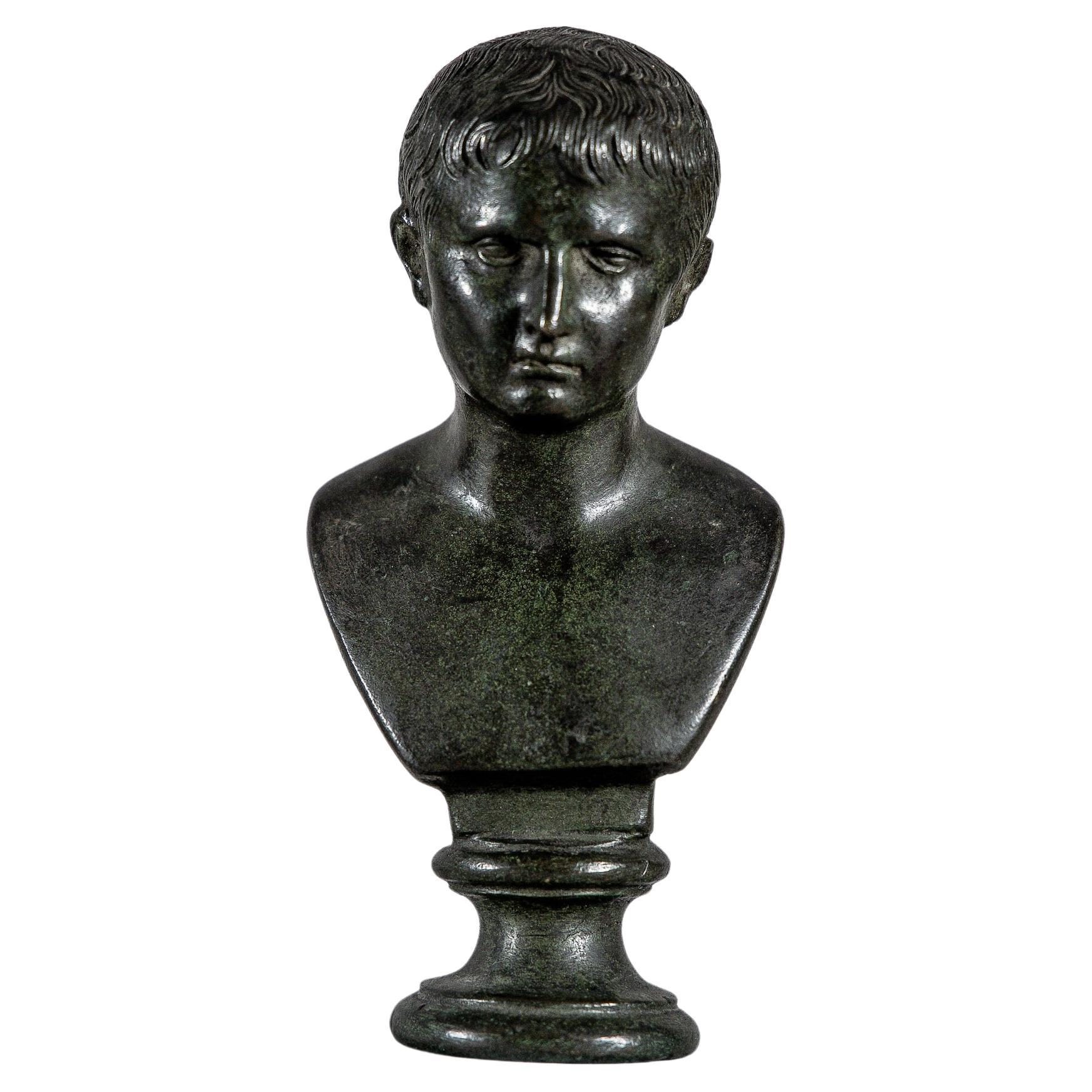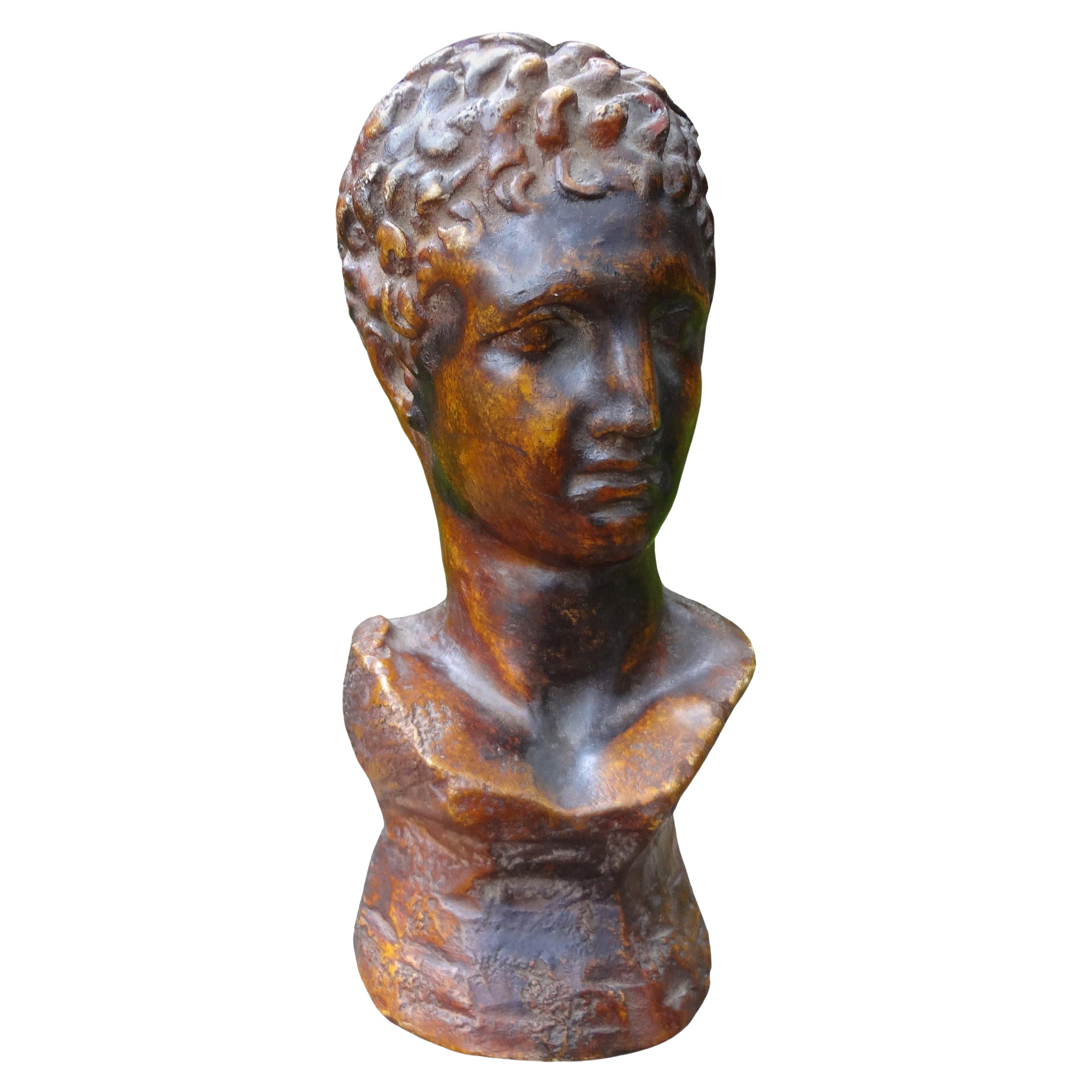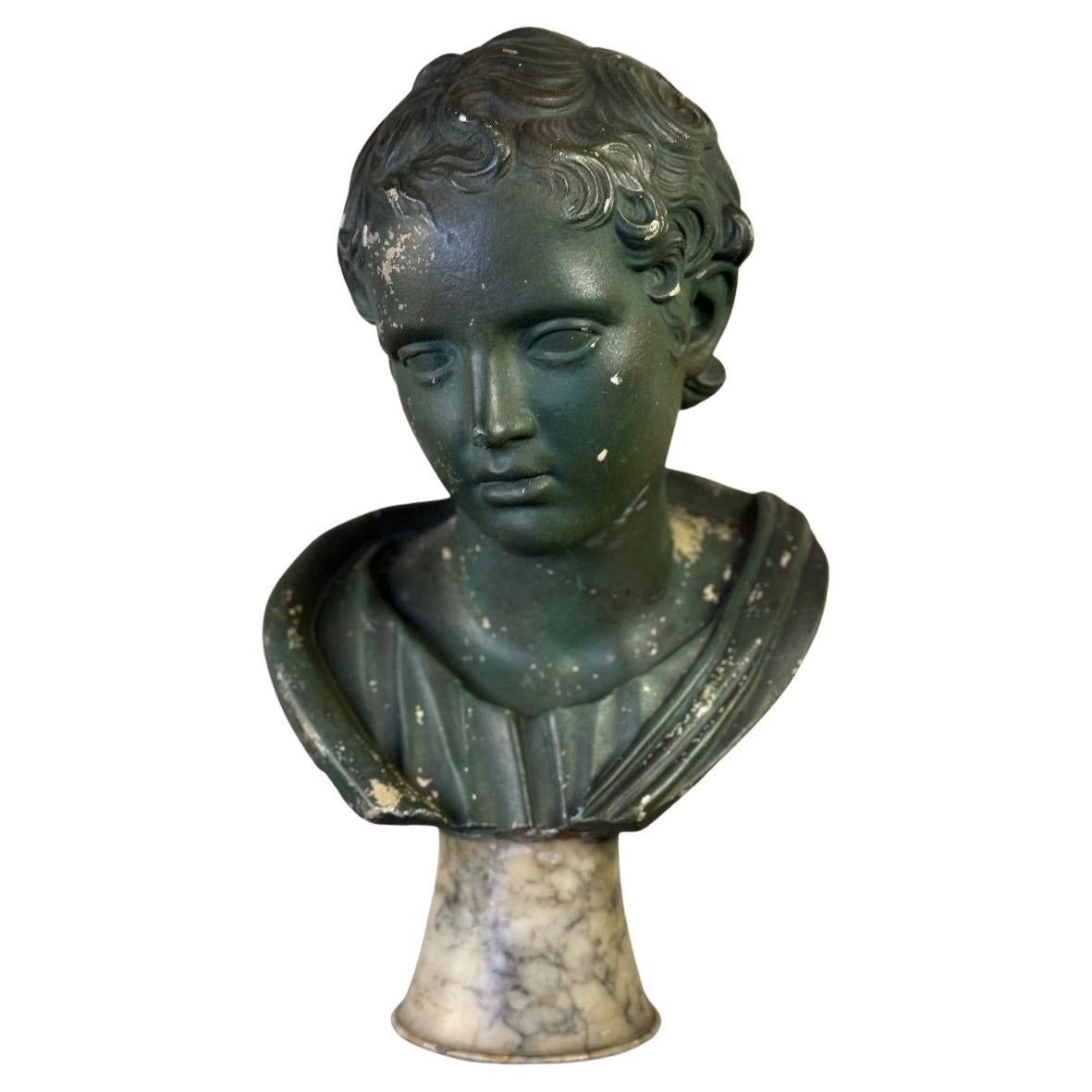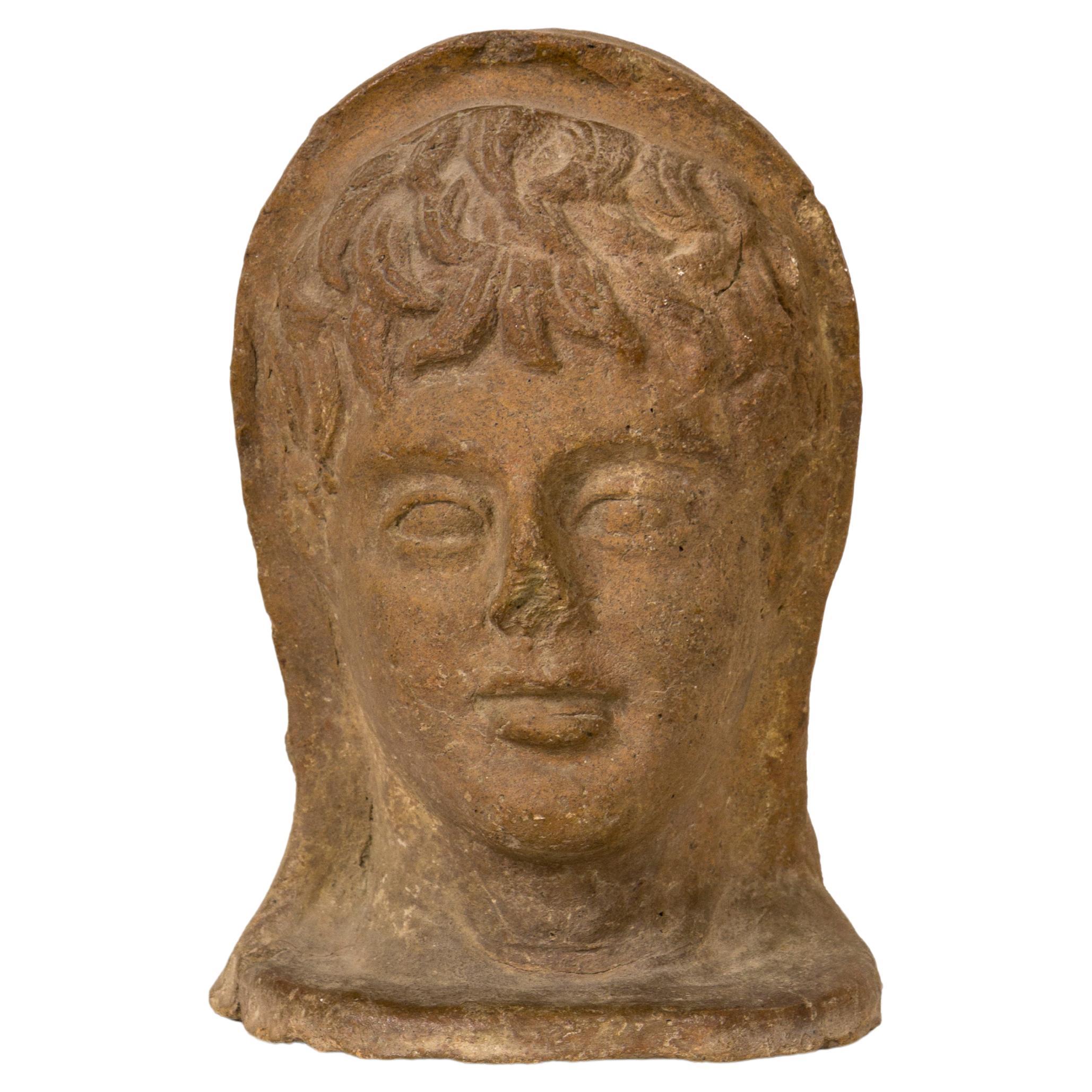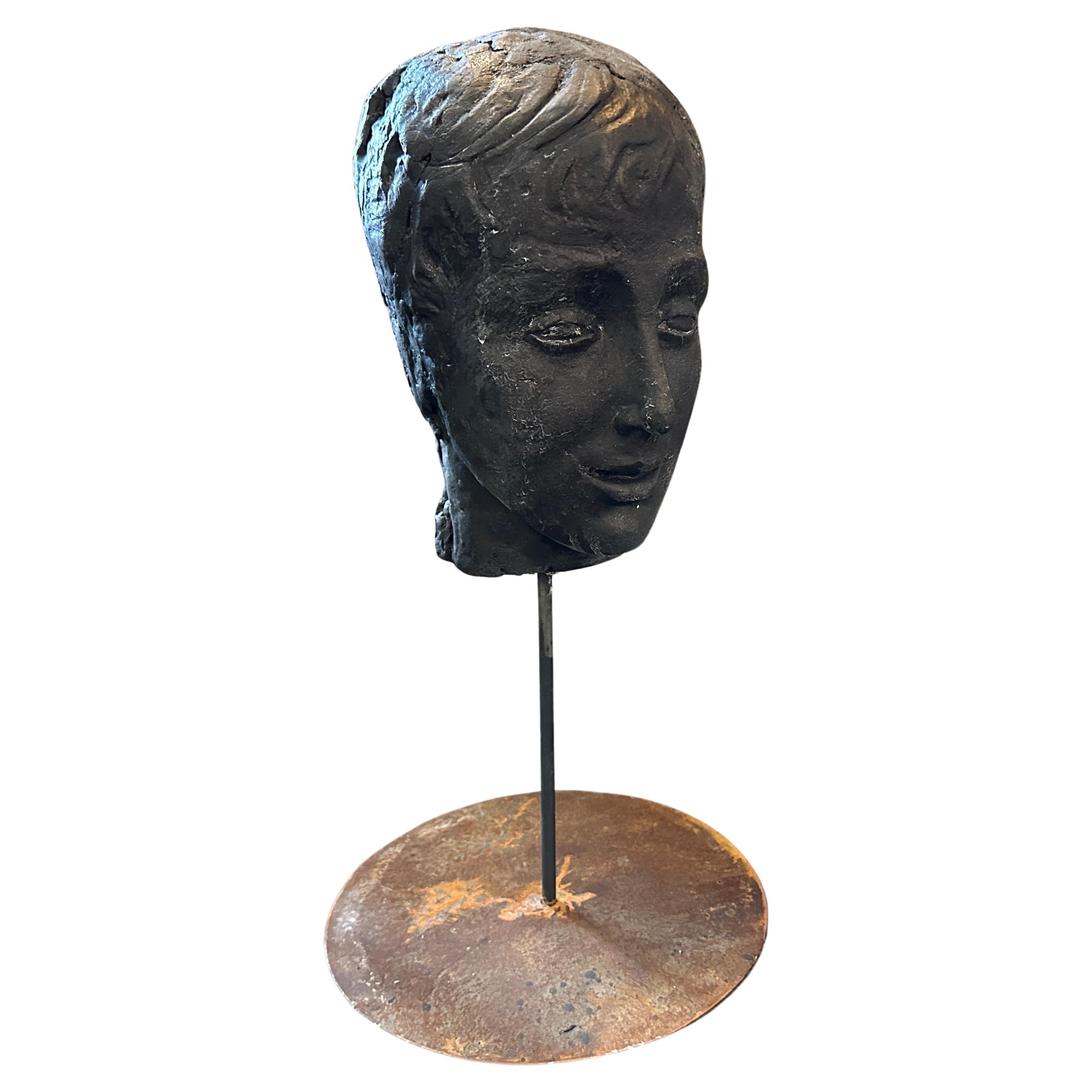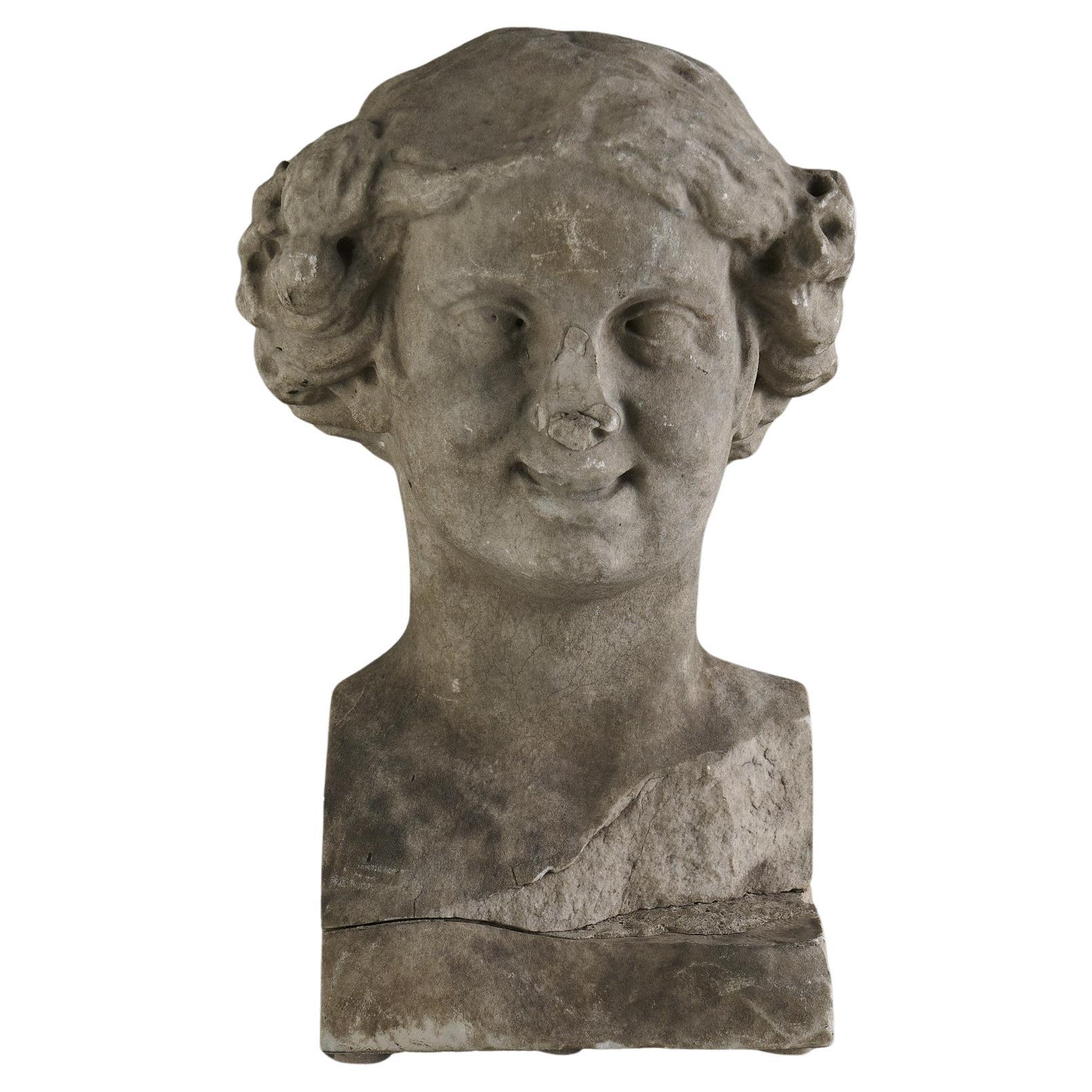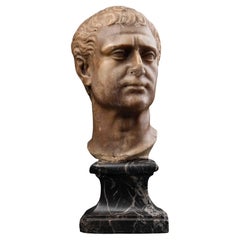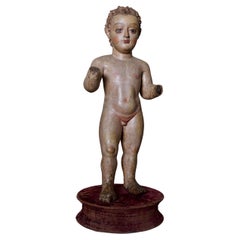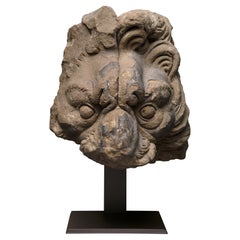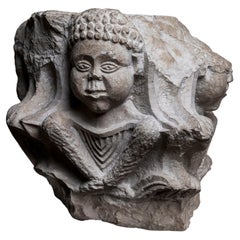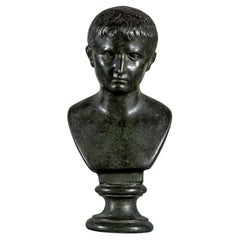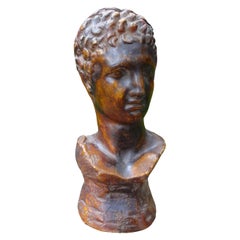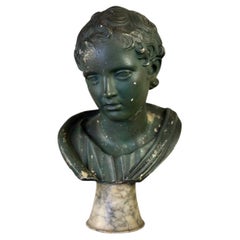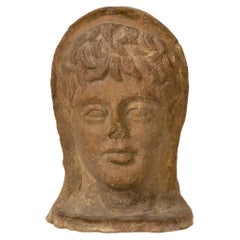Items Similar to Balsamarium shaped as a Bust of a Black Boy - Roman, 1st – 2nd Century AD
Want more images or videos?
Request additional images or videos from the seller
1 of 5
Balsamarium shaped as a Bust of a Black Boy - Roman, 1st – 2nd Century AD
$14,971.75
£11,094.89
€12,500
CA$20,439.28
A$22,737.86
CHF 11,919.47
MX$277,851.12
NOK 151,779.61
SEK 142,879.50
DKK 95,173.90
Shipping
Retrieving quote...The 1stDibs Promise:
Authenticity Guarantee,
Money-Back Guarantee,
24-Hour Cancellation
About the Item
Balsamarium shaped as a Bust of a Black Boy
Bronze, silver inlaid eyes and lips, Roman, 1st – 2nd Century AD
Provenance:
Private London Collection formed 1965-1975
H 10 cm (4 inch)
This exquisite Roman bronze balsamarium, dating from the 1st or 2nd century AD, is shaped in the form of a bust depicting a young black African boy. His youthful face has been meticulously executed to the finest detail. Beneath his abundant elaborately crafted curly hair, his wide eyes, once adorned with precious inlaid materials, expressively gaze at the onlooker. The boy sports a bare chest beset at the bottom by a frame of acanthus leaves. At the top of the balsamarium is a circular orifice, allowing fragrant contents to be poured into it and which used to be covered by a lid attached to its rim. To the right of this opening is a large loop to which a chain could be attached.
Representations of black people were not uncommon in Roman art and their popularity is evidenced by the fact that such images have been found all over the Roman Empire, in places stretching as far north as Germania. The exotic images of blacks were used for balsamaria in the shape of busts, balances, terracotta vases, lamps and statuettes depicting fighters or jugglers. They have traditionally been considered as products of the so-called school of Alexandria or at least have taken inspiration from the popular art of Greco-Roman Egypt. However, it is now accepted that there also must have been numerous other locations outside of the Alexandrian realm that produced artefacts depicting black people, but since the subject has altogether been poorly studied the exact places of origin usually remain unknown.
Balsamaria were luxury products, that, as the name suggests, were mainly used for holding balsam, the resinous, sap-like product of many different plants, perfumes as well as the oil used by athletes to clean their skin. Balsamaria often depict women's, satyr's heads or animals, or wineskins.
Anthropomorphic balsamaria became widely popular during the 2nd and 3rd centuries AD and it was especially during this period that the number of those depicting exotic sitters grew exponentially. Balsamaria of Ethiopians, Nubians, and Indians were extremely sought-after, especially in those regions of the Roman Empire where contacts with such ethnic groups was limited.
Cosmetics were as important to the ancient Romans as they are in the present time, used by men and women alike, and kept in exquisite vessels specifically made for holding them. As balsamaria were predominantly intended to hold cosmetic odorous substances, it comes as no surprise that a considerable number of them depicted black people. In fact, Africans were the slaves of choice at the thermae, where they usually served as unctores, servants who massaged and anointed the visitors of the thermae with fragrant oils before or after bathing.
Often balsamariums were deemed so important that they were buried together with their owners and some, like one of a woman's head at the British Museum (1868,0601.3) were made exclusively to be placed into tombs with offerings rather than to be used by the living.
The vessels were especially popular in Etruria and were discovered on sites dating to the Hellenistic era (cf. the Norbert Schimmel collection). Other vessels have been found on later sites up to the 4th century AD, thus they need to be studied separately to be dated.
- Dimensions:Height: 3.94 in (10 cm)Width: 2.37 in (6 cm)Depth: 0.99 in (2.5 cm)
- Style:Classical Roman (Of the Period)
- Materials and Techniques:
- Place of Origin:
- Period:
- Date of Manufacture:Roman, 1st – 2nd Century AD
- Condition:Wear consistent with age and use.
- Seller Location:Bruxelles, BE
- Reference Number:1stDibs: LU6666236556712
About the Seller
5.0
Vetted Professional Seller
Every seller passes strict standards for authenticity and reliability
1stDibs seller since 2022
15 sales on 1stDibs
Typical response time: 4 hours
- ShippingRetrieving quote...Shipping from: Bruxelles, Belgium
- Return Policy
Authenticity Guarantee
In the unlikely event there’s an issue with an item’s authenticity, contact us within 1 year for a full refund. DetailsMoney-Back Guarantee
If your item is not as described, is damaged in transit, or does not arrive, contact us within 7 days for a full refund. Details24-Hour Cancellation
You have a 24-hour grace period in which to reconsider your purchase, with no questions asked.Vetted Professional Sellers
Our world-class sellers must adhere to strict standards for service and quality, maintaining the integrity of our listings.Price-Match Guarantee
If you find that a seller listed the same item for a lower price elsewhere, we’ll match it.Trusted Global Delivery
Our best-in-class carrier network provides specialized shipping options worldwide, including custom delivery.More From This Seller
View AllRenaissance Marble Portrait - Northern Italy, 17th century
Located in Bruxelles, BE
Renaissance Marble Portrait
Northern Italy, 17th century, inspired by antiquity
Marble
36 x 13 cm (including the marble pedestal)
This Renaissance portrait head of a young man, sl...
Category
Antique 17th Century Italian Renaissance Figurative Sculptures
Materials
Marble
$9,581 Sale Price
20% Off
Child Jesus - Umbria, first half of the 16th century
Located in Bruxelles, BE
Child Jesus
Polychrome and gilded wood
Umbria, first half of the 16th century
H 40 cm
Entirely naked, the Child is standing, leaning on his left leg, his right leg forward; he keep...
Category
Antique 16th Century Italian Renaissance Religious Items
Materials
Wood
Roman Lion's Protome - Gallo-Roman, 2nd century AD/3rd century
Located in Bruxelles, BE
Roman Lion's Protome
Sandstone
Gallo-Roman, 2nd century AD - 3rd century
Provenance : Private Collection Prof. Giesen (Konstanz on Bodensee), pré 1945
Most likely from the Chateau a...
Category
Antique 15th Century and Earlier German Classical Roman Animal Sculptures
Materials
Sandstone
Rare Romanesque Capital Depicting Four Africans, Apulia, 13th Century
Located in Bruxelles, BE
Large stone capital carved on each side in strong relief. The basket is covered with two crowns of vertical acanthus leaves which sprout from the astragal and fill the space between ...
Category
Antique 15th Century and Earlier Italian Medieval Architectural Elements
Materials
Stone
$22,098 Sale Price
20% Off
Saint John the Baptist
- After a model by Bertoldo di Giovanni
Located in Bruxelles, BE
Saint John the Baptist
Bronze
After a model by Bertoldo di Giovanni (ca. 1440–1491)
Northern Italy, 18th century
27,5 x 8 x 5 cm
This finely cast and patinated bronze statuette ...
Category
Antique Late 18th Century Italian Renaissance Figurative Sculptures
Materials
Bronze
Renaissance Winged Cherub Relief
- Florence, 15th century
Located in Bruxelles, BE
Renaissance Winged Cherub Relief
Florence, Second Half of the 15th Century
Stone with traces of polychromy
Provenance: Important private collection, Northern Italy
This exceptional...
Category
Antique 15th Century and Earlier Italian Renaissance Figurative Sculptures
Materials
Stone
You May Also Like
Small Bronze Bust of the Boy Octavian, 19th Century
Located in Greding, DE
Small bronze bust of young Octavian, later Emperor Augustus and first Roman Emperor.
Category
Antique 19th Century Italian Grand Tour Busts
Materials
Bronze
French Patinated Bust Sculpture Of A Classical Male
Located in Houston, TX
French Patinated Plaster Bust Sculpture Of A Classical Male.
Our handsome French classical Greek plaster sculpture is the perfect table accessory, bookca...
Category
Vintage 1920s European Classical Greek Busts
Materials
Plaster
Young Boy, Green Patina Plaster Bust, About 1900
Located in Honnelles, WHT
Young Boy, Green Patina Plaster Bust, About 1900
Category
Mid-20th Century Italian Classical Greek Garniture
Materials
Plaster
Etruscan Sculpture Head, 4th Century B.C., Italy
Located in Girona, Spain
DESCRIPTION: Etruscan sculpture head made with terracotta, the art represents a young man from the 4th century. It's a very decorative piece and the stat...
Category
Antique 15th Century and Earlier Italian Classical Greek Busts
Materials
Terracotta
A Late 19th century Hand Crafted Clay Sicilian Head of a Young Man
Located in Catania, Sicilia
A black painted clay head handcrafted in Sicily in the late 19th century, the head it's in original condition and shows signs of aging, which contribute to their charm and authentici...
Category
Antique Late 19th Century Sicilian Neoclassical Revival Figurative Sculp...
Materials
Iron
Roman Marble Bust of Bacchus, Circa 2nd Century AD
Located in Los Angeles, CA
This Roman bust came out of a prominent Pasadena estate.
Category
Antique 15th Century and Earlier Italian Busts
Materials
Marble
More Ways To Browse
Antique Silver Miniatures
Surprise Bar
Ethnic Antique
Antique Miniature Silver Furniture
Black Woman Bust
Made In Italy Perfume
Roman Vase Bronze
Ancient Roman Terracotta
Indian Antique Chests Chests Indian
Egyptian Inlaid
Ancient Oil Lamp
Terracotta Anthropomorphic
Miniature Perfume
Egyptian Terracotta
African Woman Bronze
Antique Massager
Indian Bronze Oil Lamp
Miniature Oil Lamps
